Презентация financial reporting system

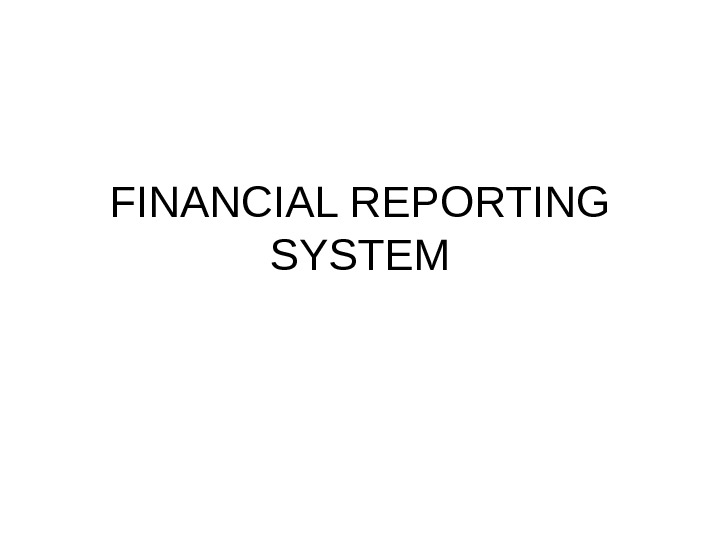

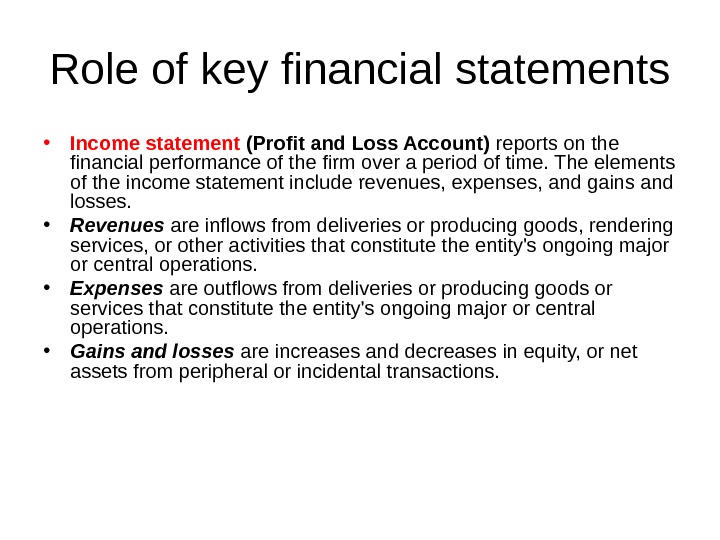




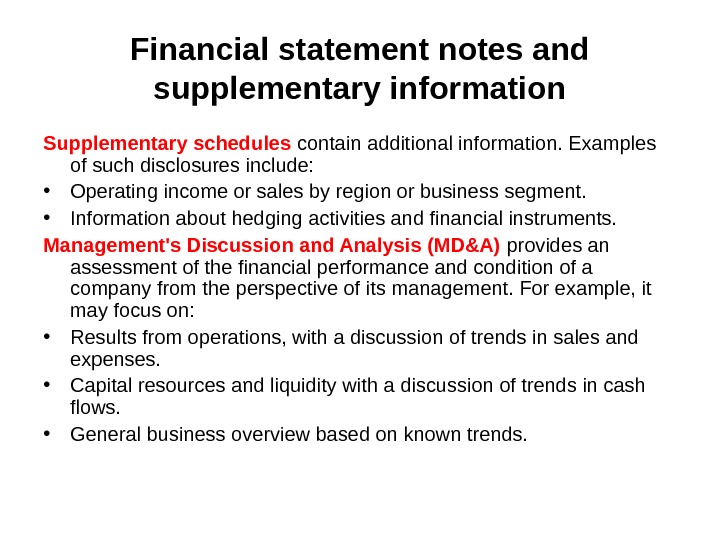

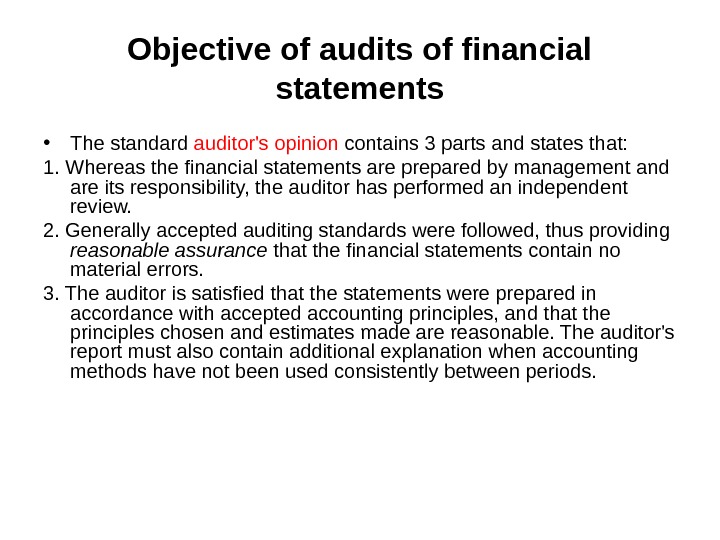

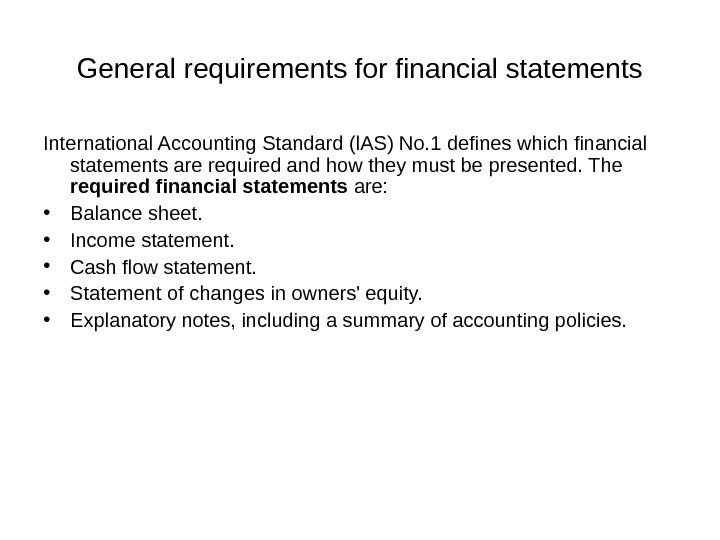



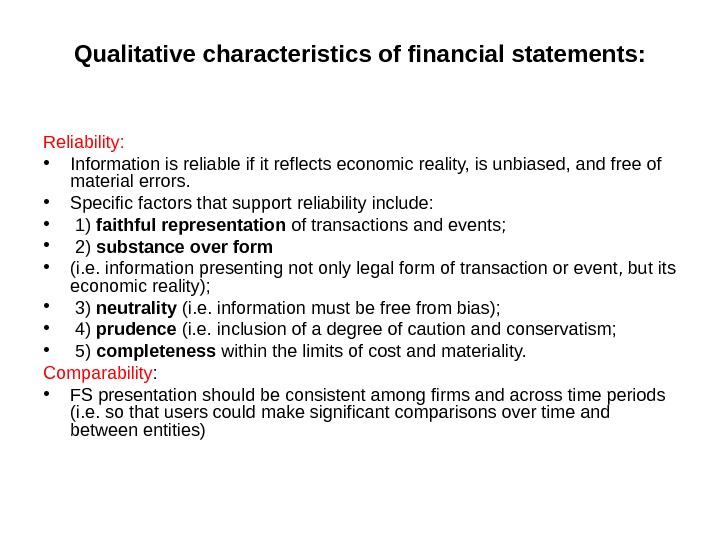

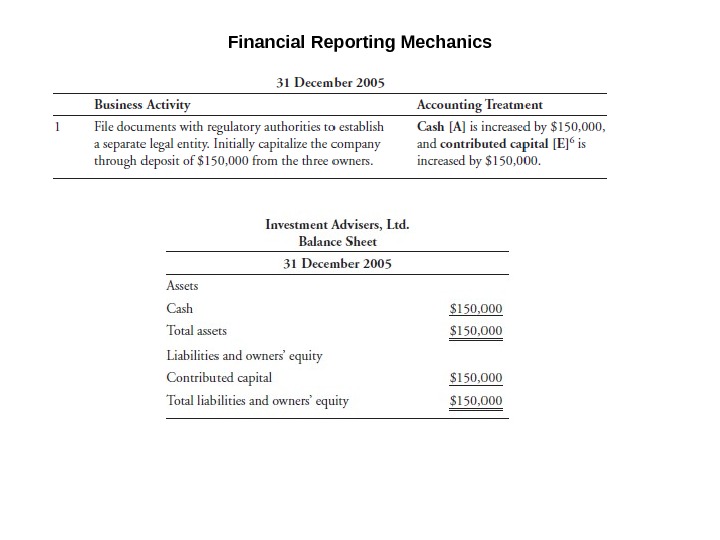

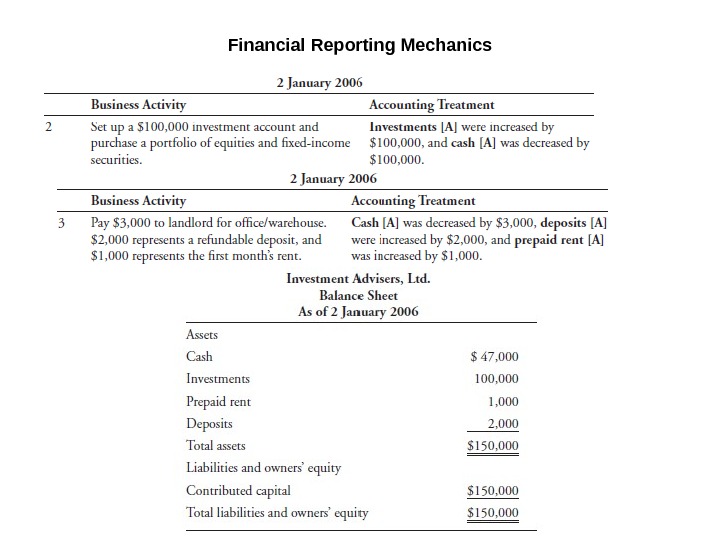
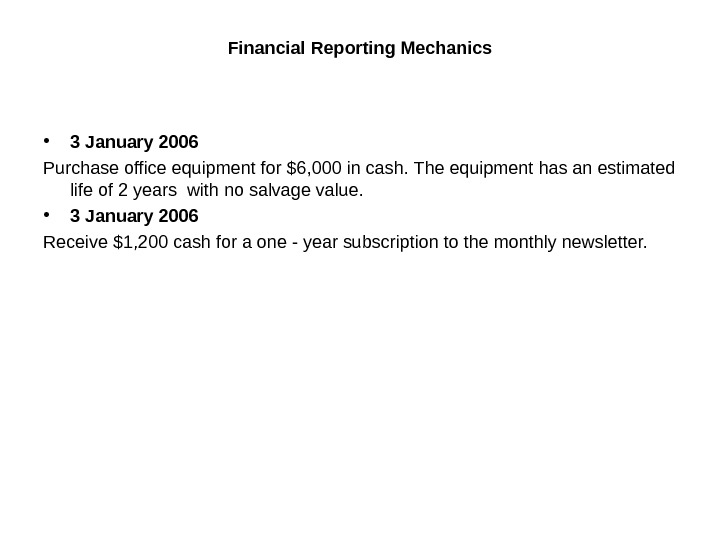
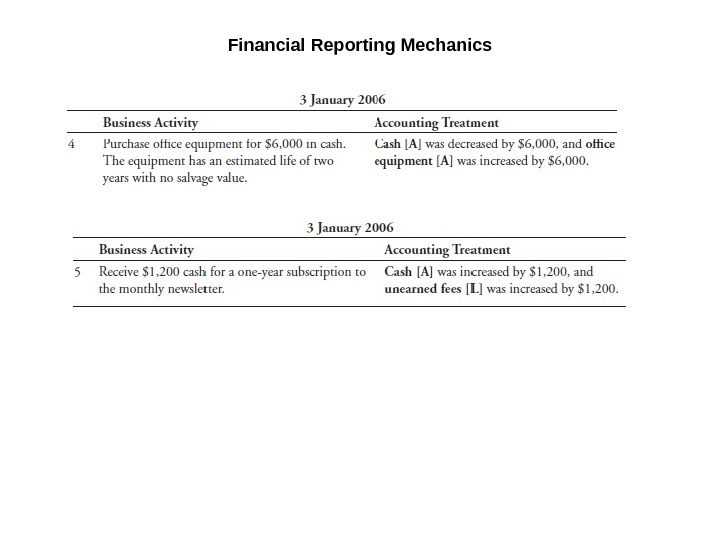
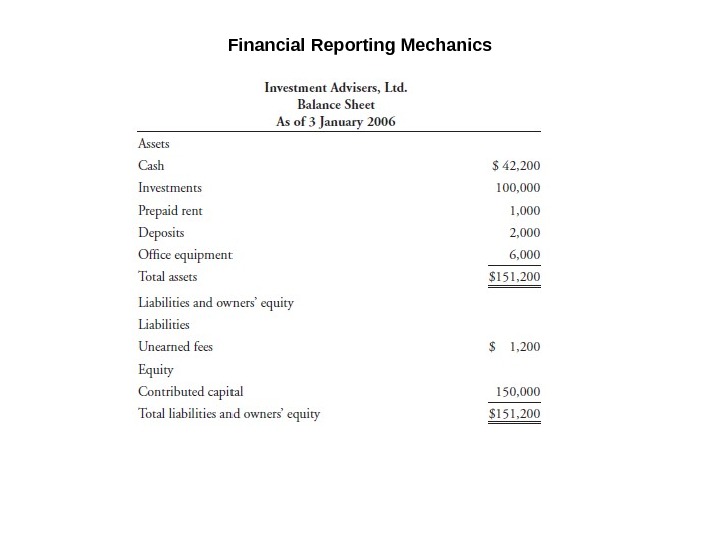
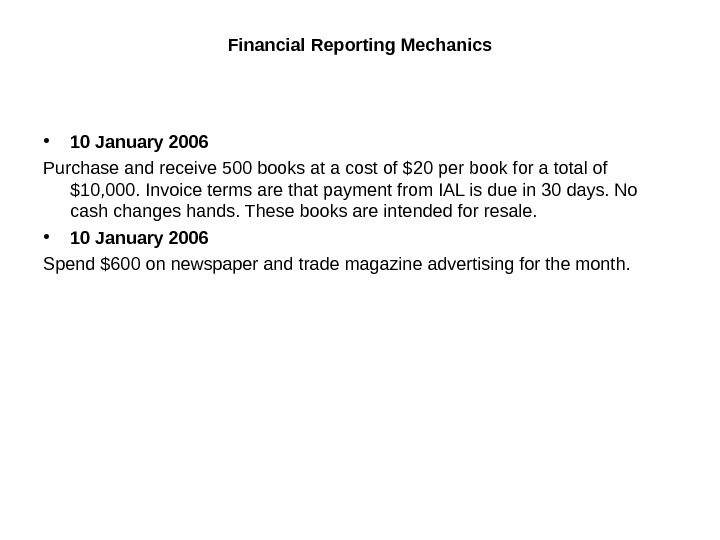
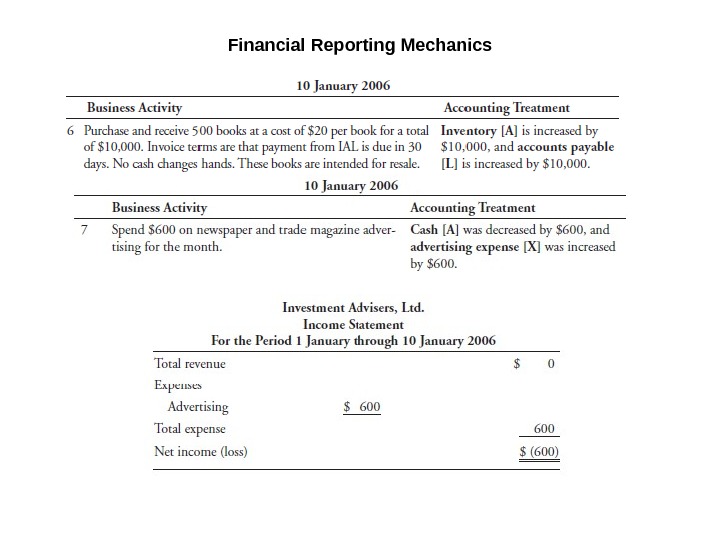
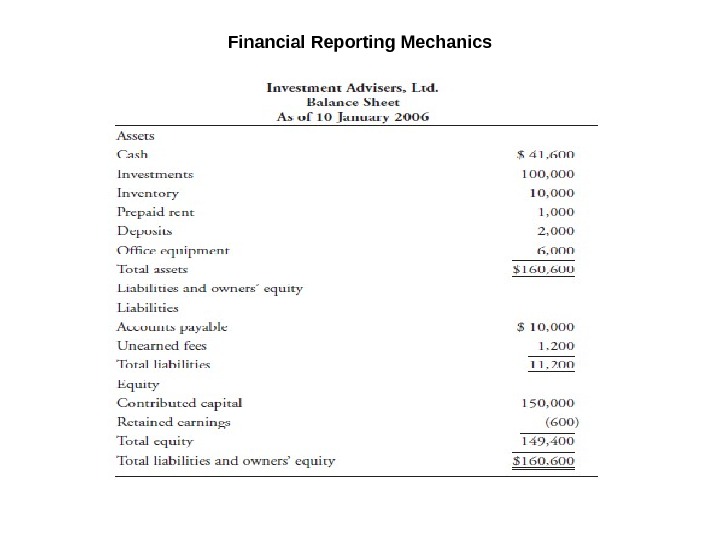

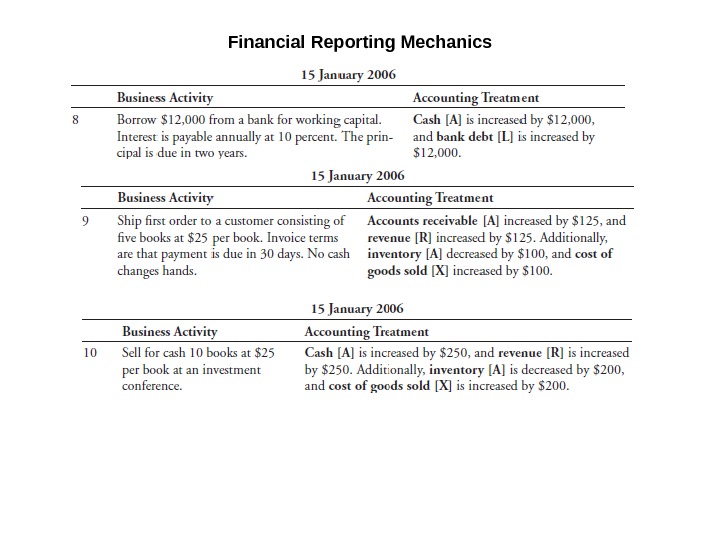
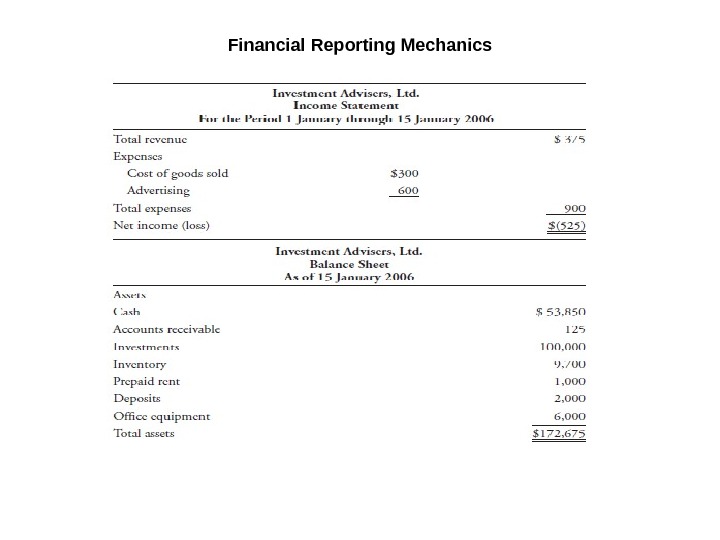
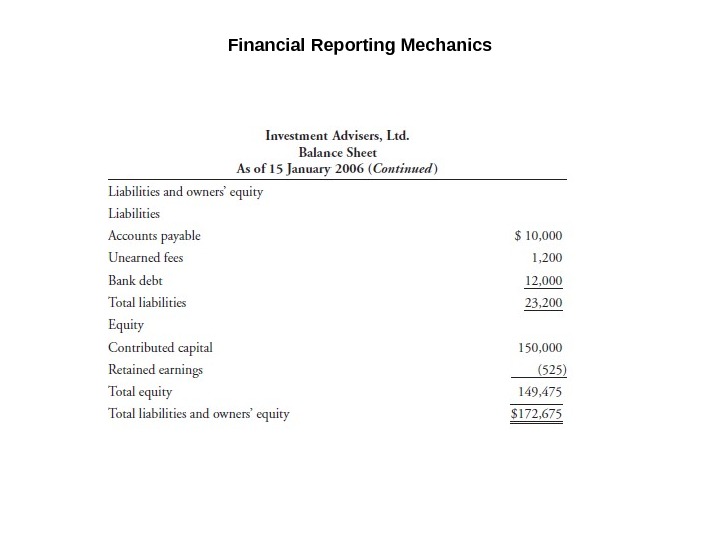

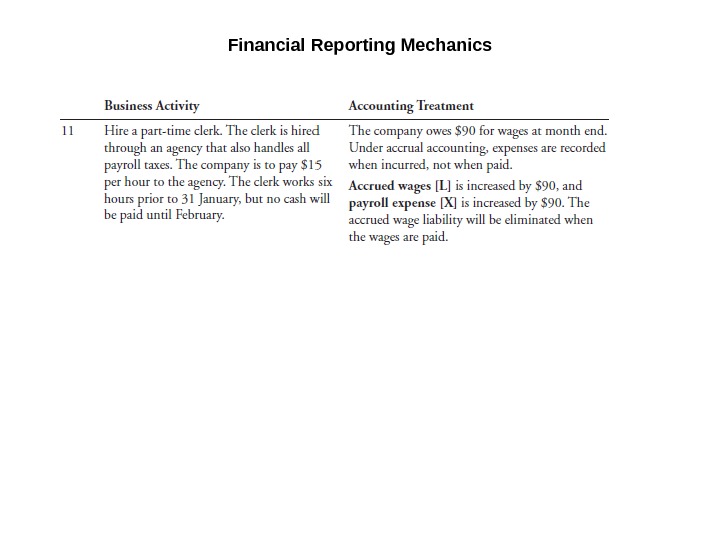
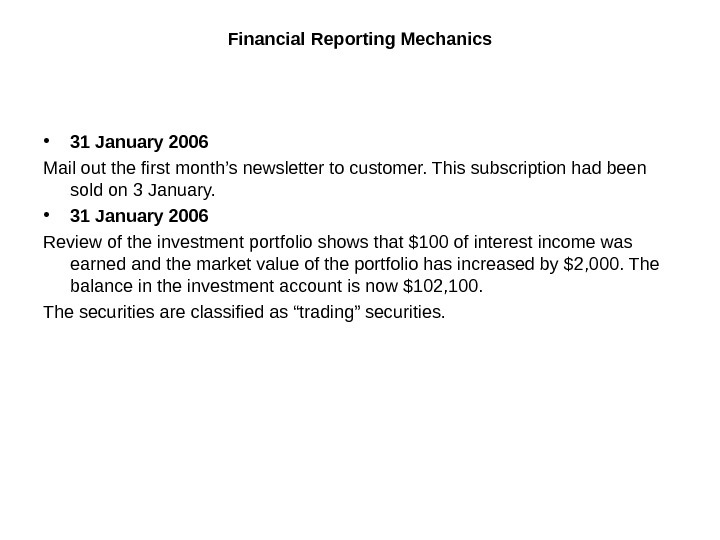
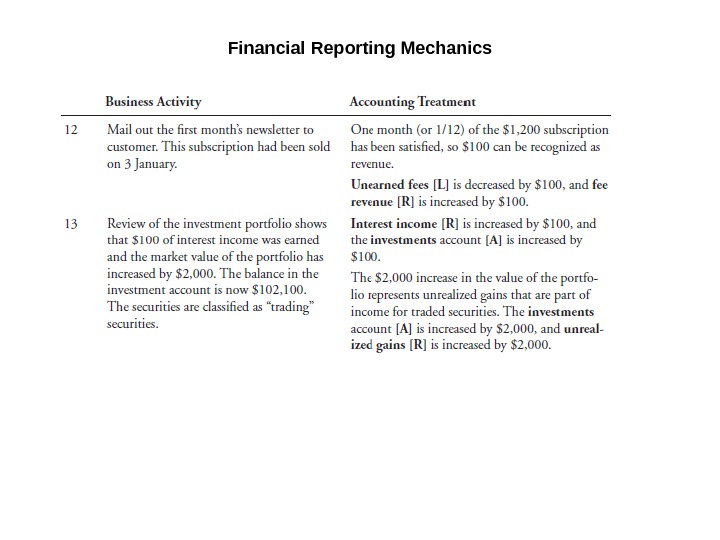
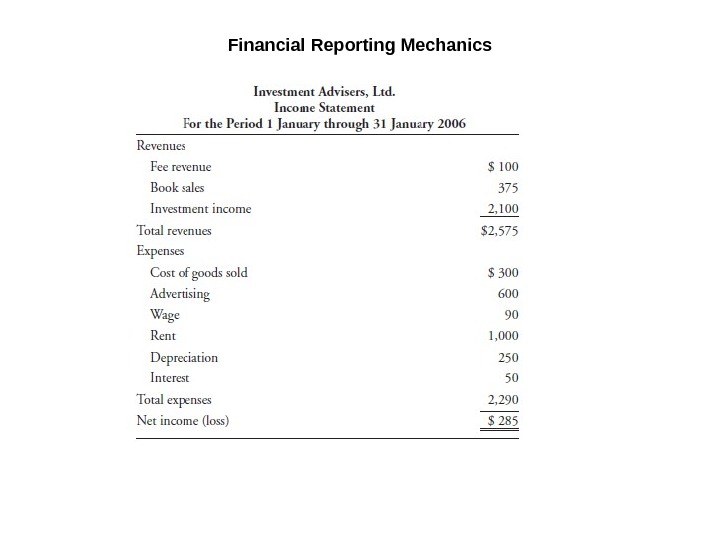

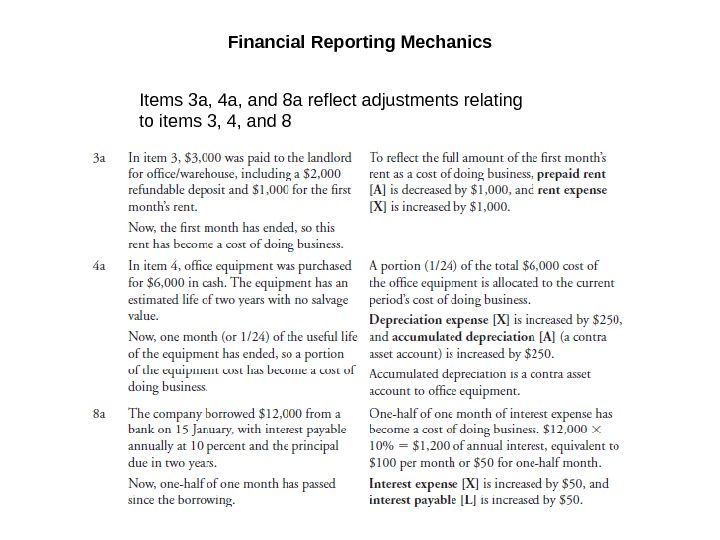
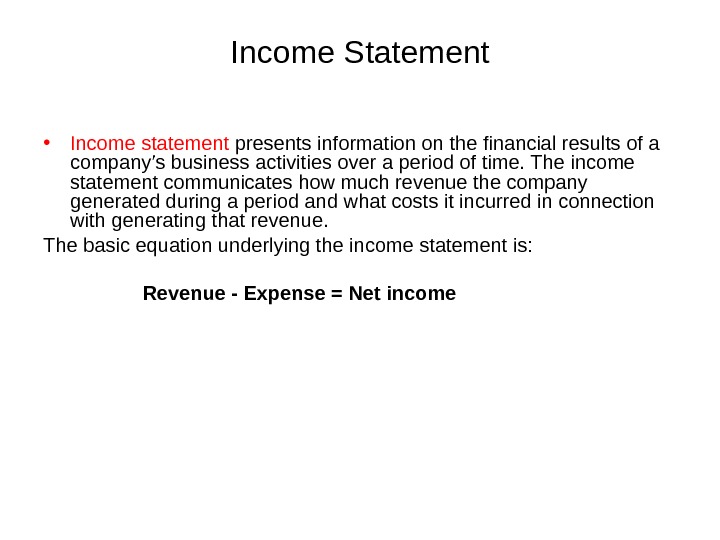
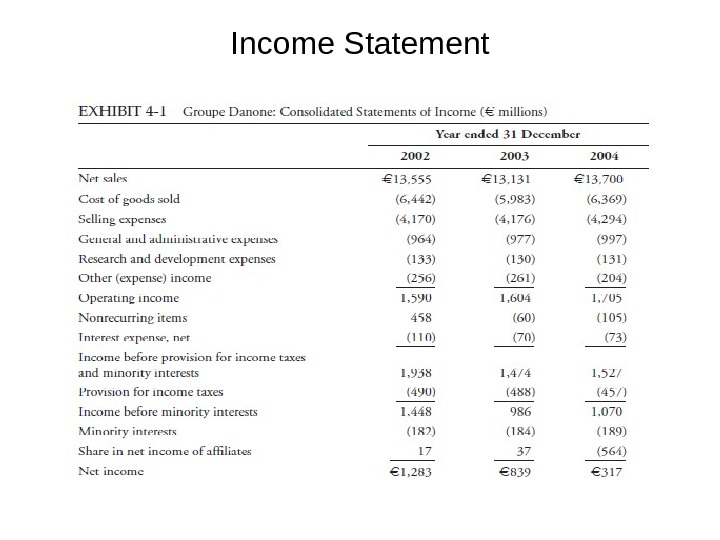
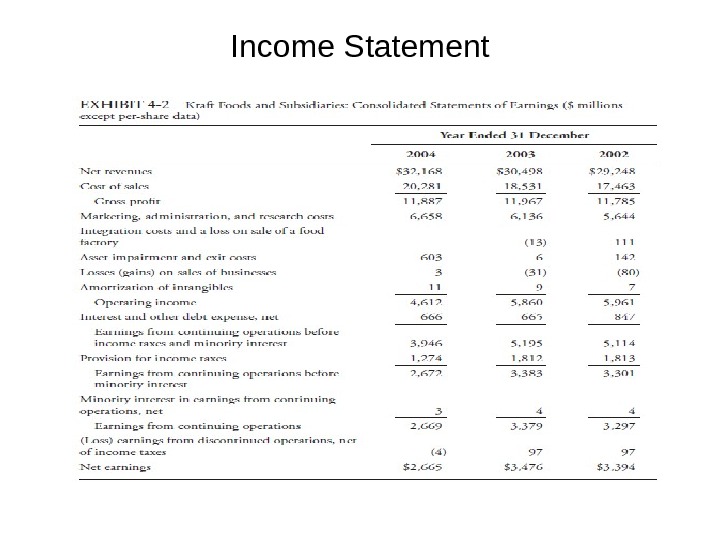

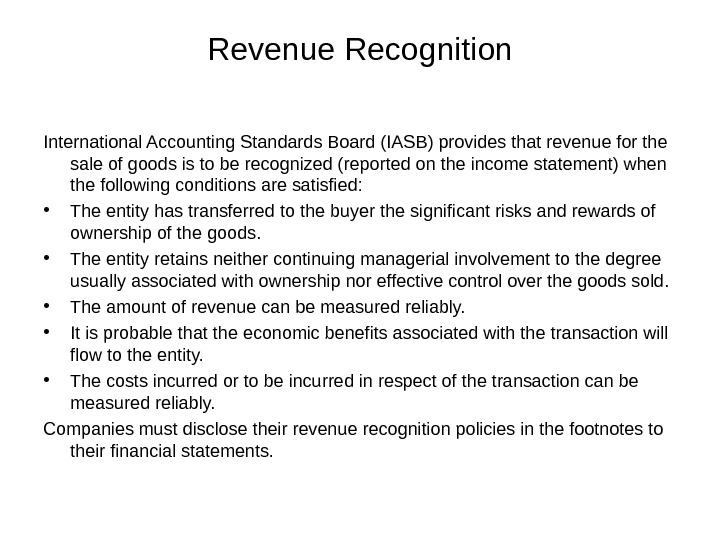


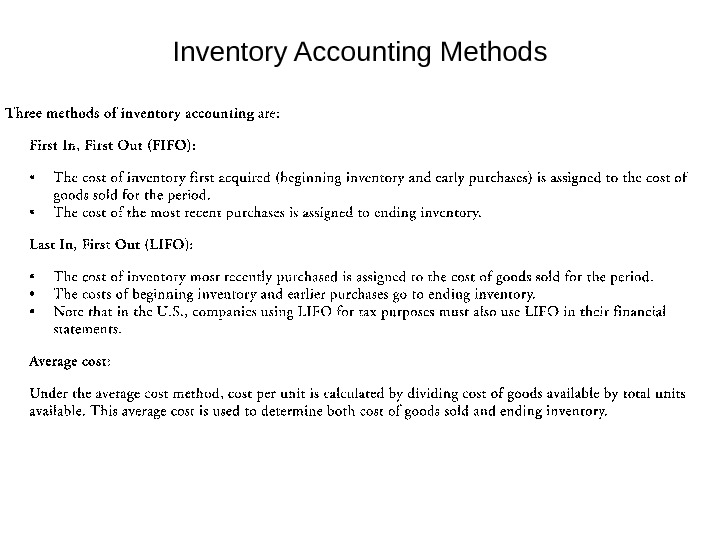
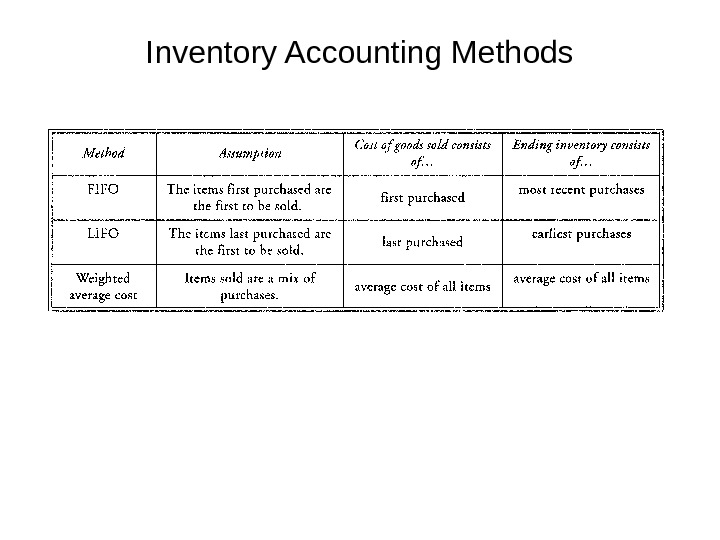
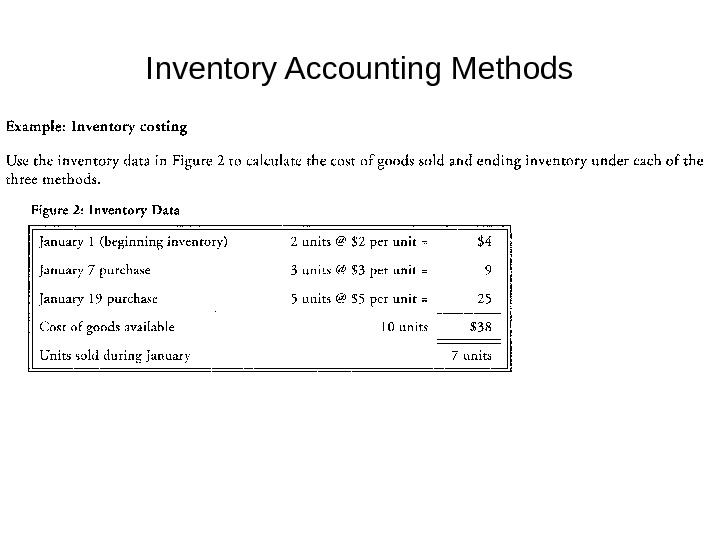

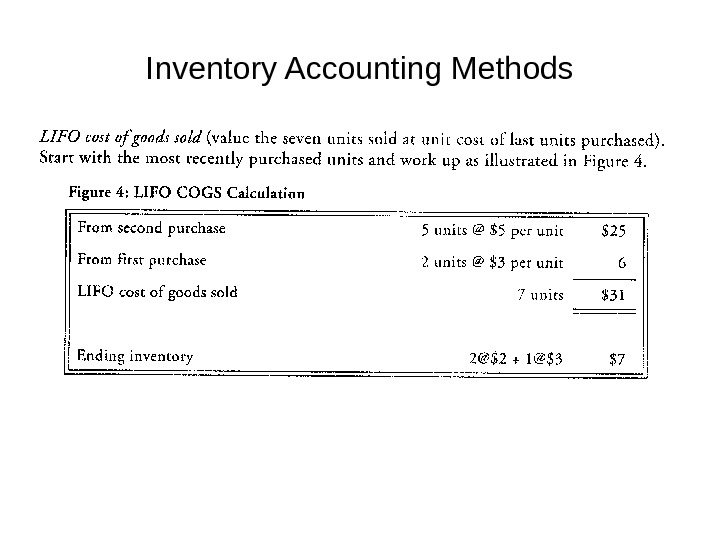
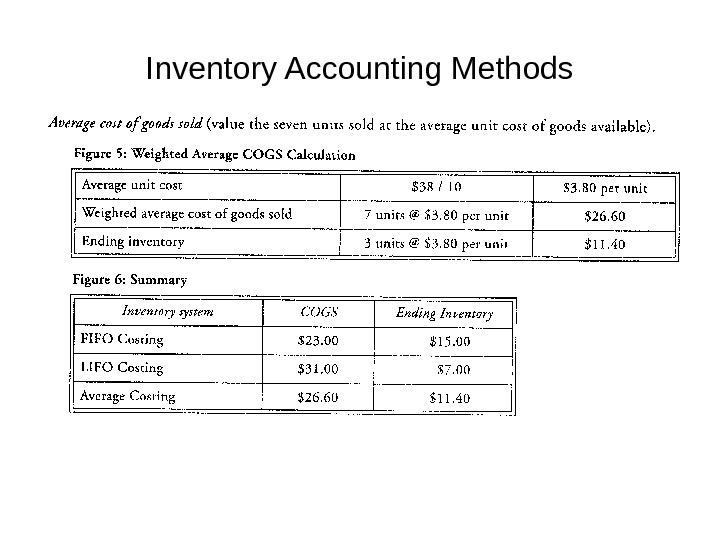
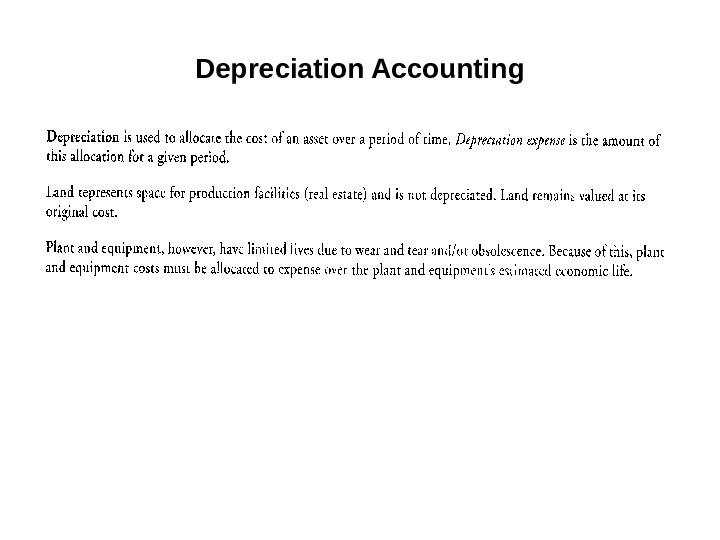
- Размер: 2 Mегабайта
- Количество слайдов: 51
Описание презентации Презентация financial reporting system по слайдам
 FINANCIAL REPORTING SYSTEM
FINANCIAL REPORTING SYSTEM
 Roles of financial reporting • Financial reporting refers to the way companies show their financial performance to investors, creditors, and other interested parties by preparing and presenting financial statements. The role of financial reporting is described by the International Accounting Standards Board (IASB) in its «Framework for the Preparation and Presentation of Financial Statements»: • «The objective of financial statements is to provide information about the financial position, performance and changes in financial position of an entity that is useful to a wide range of users in making economic decisions. «
Roles of financial reporting • Financial reporting refers to the way companies show their financial performance to investors, creditors, and other interested parties by preparing and presenting financial statements. The role of financial reporting is described by the International Accounting Standards Board (IASB) in its «Framework for the Preparation and Presentation of Financial Statements»: • «The objective of financial statements is to provide information about the financial position, performance and changes in financial position of an entity that is useful to a wide range of users in making economic decisions. «
 Role of key financial statements • Income statement (Profit and Loss Account) reports on the financial performance of the firm over a period of time. The elements of the income statement include revenues, expenses, and gains and losses. • Revenues are inflows from deliveries or producing goods, rendering services, or other activities that constitute the entity’s ongoing major or central operations. • Expenses are outflows from deliveries or producing goods or services that constitute the entity’s ongoing major or central operations. • Gains and losses are increases and decreases in equity, or net assets from peripheral or incidental transactions.
Role of key financial statements • Income statement (Profit and Loss Account) reports on the financial performance of the firm over a period of time. The elements of the income statement include revenues, expenses, and gains and losses. • Revenues are inflows from deliveries or producing goods, rendering services, or other activities that constitute the entity’s ongoing major or central operations. • Expenses are outflows from deliveries or producing goods or services that constitute the entity’s ongoing major or central operations. • Gains and losses are increases and decreases in equity, or net assets from peripheral or incidental transactions.
 Role of key financial statements • Balance sheet reports the firms financial position at a point in time. The balance sheet consists of 3 elements: • Assets are probable current and future economic benefits obtained or controlled by a particular entity as a result of past transactions or elements. Assets are a firm’s economic resources. • Liabilities are probable future economic costs. They arise from present obligations of a particular entity to transfer assets or provide services to other entities in the future as a result or past transactions or events. • Owners’ equity is the residual interest in the net assets of an entity that remains after deducting its liabilities.
Role of key financial statements • Balance sheet reports the firms financial position at a point in time. The balance sheet consists of 3 elements: • Assets are probable current and future economic benefits obtained or controlled by a particular entity as a result of past transactions or elements. Assets are a firm’s economic resources. • Liabilities are probable future economic costs. They arise from present obligations of a particular entity to transfer assets or provide services to other entities in the future as a result or past transactions or events. • Owners’ equity is the residual interest in the net assets of an entity that remains after deducting its liabilities.
 Role of key financial statements • Transactions are measured so that the fundamental accounting equation holds: assets = liabilities + owners’ equity • Owners’ equity consists of capital contributed by the firm’s owners and the cumulative earnings the firm has retained. With that in mind, we can state the expanded accounting equation: assets = liabilities + contributed capital + ending retained earnings Or, equivalently,
Role of key financial statements • Transactions are measured so that the fundamental accounting equation holds: assets = liabilities + owners’ equity • Owners’ equity consists of capital contributed by the firm’s owners and the cumulative earnings the firm has retained. With that in mind, we can state the expanded accounting equation: assets = liabilities + contributed capital + ending retained earnings Or, equivalently,
 Role of key financial statements • Cash flow statement reports the company’s cash receipts and payments. These cash flows are classified as follows: • Operating cash flows include the cash effects of transactions that involve the normal business of the firm. • Investing cash flows are those resulting from the acquisition or sale of property, plant, and equipment, of a subsidiary or segment, of securities, and of investments in other firms. • Financing cash flows are those resulting from issuance or retirement of the firm’s debt and equity securities, and include dividends paid to stockholders. • Statement of changes in owners’ equity reports the amounts and sources of changes in equity investors’ investment in the firm over a period of time.
Role of key financial statements • Cash flow statement reports the company’s cash receipts and payments. These cash flows are classified as follows: • Operating cash flows include the cash effects of transactions that involve the normal business of the firm. • Investing cash flows are those resulting from the acquisition or sale of property, plant, and equipment, of a subsidiary or segment, of securities, and of investments in other firms. • Financing cash flows are those resulting from issuance or retirement of the firm’s debt and equity securities, and include dividends paid to stockholders. • Statement of changes in owners’ equity reports the amounts and sources of changes in equity investors’ investment in the firm over a period of time.
 Financial statement notes and supplementary information • Financial statement notes (footnotes) include disclosures that provide further details about the information summarized in the financial statements. Footnotes allow users to improve their assessments of the amount, timing, and uncertainty of the estimates reported in the financial statements. Footnotes : • Provide information about accounting methods, assumptions, and estimates used by management. • Are audited, whereas other disclosures, such as supplementary schedules, are not audited. • Provide additional information on items such as business acquisitions or disposals, legal actions, employee benefit plans, contingencies and commitments, significant customers, sales to related parties, and segments of the firm.
Financial statement notes and supplementary information • Financial statement notes (footnotes) include disclosures that provide further details about the information summarized in the financial statements. Footnotes allow users to improve their assessments of the amount, timing, and uncertainty of the estimates reported in the financial statements. Footnotes : • Provide information about accounting methods, assumptions, and estimates used by management. • Are audited, whereas other disclosures, such as supplementary schedules, are not audited. • Provide additional information on items such as business acquisitions or disposals, legal actions, employee benefit plans, contingencies and commitments, significant customers, sales to related parties, and segments of the firm.
 Financial statement notes and supplementary information Supplementary schedules contain additional information. Examples of such disclosures include: • Operating income or sales by region or business segment. • Information about hedging activities and financial instruments. Management’s Discussion and Analysis (MD&A) provides an assessment of the financial performance and condition of a company from the perspective of its management. For example, it may focus on: • Results from operations, with a discussion of trends in sales and expenses. • Capital resources and liquidity with a discussion of trends in cash flows. • General business overview based on known trends.
Financial statement notes and supplementary information Supplementary schedules contain additional information. Examples of such disclosures include: • Operating income or sales by region or business segment. • Information about hedging activities and financial instruments. Management’s Discussion and Analysis (MD&A) provides an assessment of the financial performance and condition of a company from the perspective of its management. For example, it may focus on: • Results from operations, with a discussion of trends in sales and expenses. • Capital resources and liquidity with a discussion of trends in cash flows. • General business overview based on known trends.
 Objective of audits of financial statements Audit is an independent review of an entity’s financial statements. Public accountants conduct audits and examine the financial reports and supporting records. The objective of an audit is to enable the auditor to provide an opinion on the fairness and reliability of the financial statements. • The independent certified public accounting firm employed by the board of directors is responsible for seeing that the financial statements conform to the applicable accounting standards. The auditor examines the company’s accounting and internal control systems, confirms assets and liabilities, and generally tries to determine that there are no material errors in the financial statements. The auditor’s report is an important source of information.
Objective of audits of financial statements Audit is an independent review of an entity’s financial statements. Public accountants conduct audits and examine the financial reports and supporting records. The objective of an audit is to enable the auditor to provide an opinion on the fairness and reliability of the financial statements. • The independent certified public accounting firm employed by the board of directors is responsible for seeing that the financial statements conform to the applicable accounting standards. The auditor examines the company’s accounting and internal control systems, confirms assets and liabilities, and generally tries to determine that there are no material errors in the financial statements. The auditor’s report is an important source of information.
 Objective of audits of financial statements • The standard auditor’s opinion contains 3 parts and states that: 1. Whereas the financial statements are prepared by management and are its responsibility, the auditor has performed an independent review. 2. Generally accepted auditing standards were followed, thus providing reasonable assurance that the financial statements contain no material errors. 3. The auditor is satisfied that the statements were prepared in accordance with accepted accounting principles, and that the principles chosen and estimates made are reasonable. The auditor’s report must also contain additional explanation when accounting methods have not been used consistently between periods.
Objective of audits of financial statements • The standard auditor’s opinion contains 3 parts and states that: 1. Whereas the financial statements are prepared by management and are its responsibility, the auditor has performed an independent review. 2. Generally accepted auditing standards were followed, thus providing reasonable assurance that the financial statements contain no material errors. 3. The auditor is satisfied that the statements were prepared in accordance with accepted accounting principles, and that the principles chosen and estimates made are reasonable. The auditor’s report must also contain additional explanation when accounting methods have not been used consistently between periods.
 Objective of audits of financial statements • An unqualified opinion indicates that the auditor believes the statements are free from material omissions and errors. • If the statements make any exceptions to the accounting principles, the auditor may issue a qualified opinion and explain these exceptions in the audit report. • The auditor can issue an adverse opinion if the statements are not presented fairly or are materially nonconforming with accounting standards.
Objective of audits of financial statements • An unqualified opinion indicates that the auditor believes the statements are free from material omissions and errors. • If the statements make any exceptions to the accounting principles, the auditor may issue a qualified opinion and explain these exceptions in the audit report. • The auditor can issue an adverse opinion if the statements are not presented fairly or are materially nonconforming with accounting standards.
 General requirements for financial statements International Accounting Standard (l. AS) No. 1 defines which financial statements are required and how they must be presented. The required financial statements are: • Balance sheet. • Income statement. • Cash flow statement. • Statement of changes in owners’ equity. • Explanatory notes, including a summary of accounting policies.
General requirements for financial statements International Accounting Standard (l. AS) No. 1 defines which financial statements are required and how they must be presented. The required financial statements are: • Balance sheet. • Income statement. • Cash flow statement. • Statement of changes in owners’ equity. • Explanatory notes, including a summary of accounting policies.
 General requirements for financial statements • Fair presentation as faithfully representing the effects of the entity’s transactions and events according to the standards for recognizing assets, liabilities, revenues and expenses. • Going concern basis , meaning the financial statements are based on the assumption that the firm will continue to exist unless its management intends to (or must) liquidate it. • Accrual basis of accounting is used to prepare the financial statements other than the statement of cash flows. • Consistency between periods in how items are presented and classified, with prior period amounts disclosed for comparison. • Materiality, meaning the financial statements should be free of misstatements or omissions that could influence the decisions of users of financial statements.
General requirements for financial statements • Fair presentation as faithfully representing the effects of the entity’s transactions and events according to the standards for recognizing assets, liabilities, revenues and expenses. • Going concern basis , meaning the financial statements are based on the assumption that the firm will continue to exist unless its management intends to (or must) liquidate it. • Accrual basis of accounting is used to prepare the financial statements other than the statement of cash flows. • Consistency between periods in how items are presented and classified, with prior period amounts disclosed for comparison. • Materiality, meaning the financial statements should be free of misstatements or omissions that could influence the decisions of users of financial statements.
 General requirements for financial statements • PRINCIPLES OF PRESENTATION : • 1) Aggregation of similar items and separation of dissimilar items (i. e. each material class of similar items is presented separately. Dissimilar items are presented separately unless they are immaterial); • 2) No offsetting of assets against liabilities or income against expenses unless a specific standard permits or requires it; • 3) Classified balance sheet • BS should distinguish between current and non-current assets and liabilities, unless a presentation based on liquidity provides more relevant and reliable information (e. g. in case of a bank or similar financial institution); • 4) Minimum information is required on face of each financial statement and in the notes. • (e. g. face of balance sheet must show specific items such as cash and cash equivalents, PP&E, and Inventory; items listed on face of IS must include revenues, profit or loss, tax expense, and finance costs among others.
General requirements for financial statements • PRINCIPLES OF PRESENTATION : • 1) Aggregation of similar items and separation of dissimilar items (i. e. each material class of similar items is presented separately. Dissimilar items are presented separately unless they are immaterial); • 2) No offsetting of assets against liabilities or income against expenses unless a specific standard permits or requires it; • 3) Classified balance sheet • BS should distinguish between current and non-current assets and liabilities, unless a presentation based on liquidity provides more relevant and reliable information (e. g. in case of a bank or similar financial institution); • 4) Minimum information is required on face of each financial statement and in the notes. • (e. g. face of balance sheet must show specific items such as cash and cash equivalents, PP&E, and Inventory; items listed on face of IS must include revenues, profit or loss, tax expense, and finance costs among others.
 Qualitative characteristics of financial statements: • Financial statements should be: • 1)understandable; • 2)relevant; • 3)reliable; • 4)comparable. Understandability : • Users with basic knowledge of business and accounting and who • make reasonable effort to study financial statements should be able to readily understand information that statements present. Relevance: • FSs are relevant if information in them can influence users’ economic decisions or affect users’ evaluations of past events or forecasts of future events. To be relevant, info should be timely and sufficiently detailed.
Qualitative characteristics of financial statements: • Financial statements should be: • 1)understandable; • 2)relevant; • 3)reliable; • 4)comparable. Understandability : • Users with basic knowledge of business and accounting and who • make reasonable effort to study financial statements should be able to readily understand information that statements present. Relevance: • FSs are relevant if information in them can influence users’ economic decisions or affect users’ evaluations of past events or forecasts of future events. To be relevant, info should be timely and sufficiently detailed.
 Qualitative characteristics of financial statements: Reliability: • Information is reliable if it reflects economic reality, is unbiased, and free of material errors. • Specific factors that support reliability include: • 1) faithful representation of transactions and events; • 2) substance over form • (i. e. information presenting not only legal form of transaction or event, but its economic reality); • 3) neutrality (i. e. information must be free from bias); • 4) prudence (i. e. inclusion of a degree of caution and conservatism; • 5) completeness within the limits of cost and materiality. Comparability : • FS presentation should be consistent among firms and across time periods (i. e. so that users could make significant comparisons over time and between entities)
Qualitative characteristics of financial statements: Reliability: • Information is reliable if it reflects economic reality, is unbiased, and free of material errors. • Specific factors that support reliability include: • 1) faithful representation of transactions and events; • 2) substance over form • (i. e. information presenting not only legal form of transaction or event, but its economic reality); • 3) neutrality (i. e. information must be free from bias); • 4) prudence (i. e. inclusion of a degree of caution and conservatism; • 5) completeness within the limits of cost and materiality. Comparability : • FS presentation should be consistent among firms and across time periods (i. e. so that users could make significant comparisons over time and between entities)
 Financial Reporting Mechanics Business Activities for Investment Advisers, Ltd. • 31 December 2005 File documents with regulatory authorities to establish a separate legal entity. Initially capitalize the company through deposit of $150, 000 from the three owners.
Financial Reporting Mechanics Business Activities for Investment Advisers, Ltd. • 31 December 2005 File documents with regulatory authorities to establish a separate legal entity. Initially capitalize the company through deposit of $150, 000 from the three owners.
 Financial Reporting Mechanics
Financial Reporting Mechanics
 Financial Reporting Mechanics • 2 January 2006 Set up a $100, 000 investment account and purchase a portfolio of equities and fixed-income securities. • 2 January 3006 Pay $3, 000 to landlord for office/warehouse. $2, 000 represents a refundable deposit, and $1, 000 represents the first month’s rent.
Financial Reporting Mechanics • 2 January 2006 Set up a $100, 000 investment account and purchase a portfolio of equities and fixed-income securities. • 2 January 3006 Pay $3, 000 to landlord for office/warehouse. $2, 000 represents a refundable deposit, and $1, 000 represents the first month’s rent.
 Financial Reporting Mechanics
Financial Reporting Mechanics
 Financial Reporting Mechanics • 3 January 2006 Purchase office equipment for $6, 000 in cash. The equipment has an estimated life of 2 years with no salvage value. • 3 January 2006 Receive $1, 200 cash for a one — year subscription to the monthly newsletter.
Financial Reporting Mechanics • 3 January 2006 Purchase office equipment for $6, 000 in cash. The equipment has an estimated life of 2 years with no salvage value. • 3 January 2006 Receive $1, 200 cash for a one — year subscription to the monthly newsletter.
 Financial Reporting Mechanics
Financial Reporting Mechanics
 Financial Reporting Mechanics
Financial Reporting Mechanics
 Financial Reporting Mechanics • 10 January 2006 Purchase and receive 500 books at a cost of $20 per book for a total of $10, 000. Invoice terms are that payment from IAL is due in 30 days. No cash changes hands. These books are intended for resale. • 10 January 2006 Spend $600 on newspaper and trade magazine advertising for the month.
Financial Reporting Mechanics • 10 January 2006 Purchase and receive 500 books at a cost of $20 per book for a total of $10, 000. Invoice terms are that payment from IAL is due in 30 days. No cash changes hands. These books are intended for resale. • 10 January 2006 Spend $600 on newspaper and trade magazine advertising for the month.
 Financial Reporting Mechanics
Financial Reporting Mechanics
 Financial Reporting Mechanics
Financial Reporting Mechanics
 Financial Reporting Mechanics • 15 January 2006 Borrow $12, 000 from a bank for working capital. Interest is payable annually at 10%. The principal is due in 2 years. • 15 January 2006 Ship first order to a customer consisting of 5 books at $25 per book. Invoice terms are that payment is due in 30 days. No cash changes hands. • 15 January 2006 Sell for cash 10 books at $25 per book at an investment conference.
Financial Reporting Mechanics • 15 January 2006 Borrow $12, 000 from a bank for working capital. Interest is payable annually at 10%. The principal is due in 2 years. • 15 January 2006 Ship first order to a customer consisting of 5 books at $25 per book. Invoice terms are that payment is due in 30 days. No cash changes hands. • 15 January 2006 Sell for cash 10 books at $25 per book at an investment conference.
 Financial Reporting Mechanics
Financial Reporting Mechanics
 Financial Reporting Mechanics
Financial Reporting Mechanics
 Financial Reporting Mechanics
Financial Reporting Mechanics
 Financial Reporting Mechanics • 30 January 2006 Hire a part-time clerk. The clerk is hired through an agency that also handles all payroll taxes. The company is to pay $15 per hour to the agency. The clerk works six hours prior to 31 January, but no cash will be paid until February.
Financial Reporting Mechanics • 30 January 2006 Hire a part-time clerk. The clerk is hired through an agency that also handles all payroll taxes. The company is to pay $15 per hour to the agency. The clerk works six hours prior to 31 January, but no cash will be paid until February.
 Financial Reporting Mechanics
Financial Reporting Mechanics
 Financial Reporting Mechanics • 31 January 2006 Mail out the first month’s newsletter to customer. This subscription had been sold on 3 January. • 31 January 2006 Review of the investment portfolio shows that $100 of interest income was earned and the market value of the portfolio has increased by $2, 000. The balance in the investment account is now $102, 100. The securities are classified as “trading” securities.
Financial Reporting Mechanics • 31 January 2006 Mail out the first month’s newsletter to customer. This subscription had been sold on 3 January. • 31 January 2006 Review of the investment portfolio shows that $100 of interest income was earned and the market value of the portfolio has increased by $2, 000. The balance in the investment account is now $102, 100. The securities are classified as “trading” securities.
 Financial Reporting Mechanics
Financial Reporting Mechanics
 Financial Reporting Mechanics
Financial Reporting Mechanics
 Financial Reporting Mechanics
Financial Reporting Mechanics
 Financial Reporting Mechanics Items 3 a, 4 a, and 8 a reflect adjustments relating to items 3, 4, and
Financial Reporting Mechanics Items 3 a, 4 a, and 8 a reflect adjustments relating to items 3, 4, and
 Income Statement • Income statement presents information on the financial results of a company’s business activities over a period of time. The income statement communicates how much revenue the company generated during a period and what costs it incurred in connection with generating that revenue. The basic equation underlying the income statement is: Revenue — Expense = Net income
Income Statement • Income statement presents information on the financial results of a company’s business activities over a period of time. The income statement communicates how much revenue the company generated during a period and what costs it incurred in connection with generating that revenue. The basic equation underlying the income statement is: Revenue — Expense = Net income
 Income Statement
Income Statement
 Income Statement
Income Statement
 Revenue Recognition • A fundamental principle of accrual accounting is that revenue is recognized when it is earned , so the company’s financial records reflect the sale when it is made and a related accounts receivable is created. Later, when cash changes hands, the company’s financial records simply reflect that cash has been received to settle an account receivable. • Relation of revenue to cash collected from customers: Total revenue recorded in given fiscal year = cash collected from customers + increase in net A/R — increase in unearned revenue
Revenue Recognition • A fundamental principle of accrual accounting is that revenue is recognized when it is earned , so the company’s financial records reflect the sale when it is made and a related accounts receivable is created. Later, when cash changes hands, the company’s financial records simply reflect that cash has been received to settle an account receivable. • Relation of revenue to cash collected from customers: Total revenue recorded in given fiscal year = cash collected from customers + increase in net A/R — increase in unearned revenue
 Revenue Recognition International Accounting Standards Board (IASB) provides that revenue for the sale of goods is to be recognized (reported on the income statement) when the following conditions are satisfied: • The entity has transferred to the buyer the significant risks and rewards of ownership of the goods. • The entity retains neither continuing managerial involvement to the degree usually associated with ownership nor effective control over the goods sold. • The amount of revenue can be measured reliably. • It is probable that the economic benefits associated with the transaction will flow to the entity. • The costs incurred or to be incurred in respect of the transaction can be measured reliably. Companies must disclose their revenue recognition policies in the footnotes to their financial statements.
Revenue Recognition International Accounting Standards Board (IASB) provides that revenue for the sale of goods is to be recognized (reported on the income statement) when the following conditions are satisfied: • The entity has transferred to the buyer the significant risks and rewards of ownership of the goods. • The entity retains neither continuing managerial involvement to the degree usually associated with ownership nor effective control over the goods sold. • The amount of revenue can be measured reliably. • It is probable that the economic benefits associated with the transaction will flow to the entity. • The costs incurred or to be incurred in respect of the transaction can be measured reliably. Companies must disclose their revenue recognition policies in the footnotes to their financial statements.
 Expense Recognition Under the IASB Framework, expenses are “ decreases in economic benefits during the accounting period in the form of outflows or depletions of assets or incurrences of liabilities that result in decreases in equity, other than those relating to distributions to equity participants. • In general, a company recognizes expenses in the period that it consumes (i. e. , uses up) the economic benefits associated with the expenditure, or loses some previously recognized economic benefit. • A general principle of expense recognition is the matching principle, also known as the “ matching of costs with revenues. ” Under the matching principle, a company directly matches some expenses (e. g. , cost of goods sold) with associated revenues. • The matching principle requires that the company match the cost of goods sold with the revenues of the period.
Expense Recognition Under the IASB Framework, expenses are “ decreases in economic benefits during the accounting period in the form of outflows or depletions of assets or incurrences of liabilities that result in decreases in equity, other than those relating to distributions to equity participants. • In general, a company recognizes expenses in the period that it consumes (i. e. , uses up) the economic benefits associated with the expenditure, or loses some previously recognized economic benefit. • A general principle of expense recognition is the matching principle, also known as the “ matching of costs with revenues. ” Under the matching principle, a company directly matches some expenses (e. g. , cost of goods sold) with associated revenues. • The matching principle requires that the company match the cost of goods sold with the revenues of the period.
 Expense Recognition • Period costs , expenditures that less directly match the timing of revenues, are reflected in the period when a company makes the expenditure or incurs the liability to pay. • Administrative expenses are an example of period costs. Other expenditures that also less directly match the timing of revenues relate more directly to future expected benefits; in this case, the expenditures are allocated systematically with the passage of time. An example is depreciation expense.
Expense Recognition • Period costs , expenditures that less directly match the timing of revenues, are reflected in the period when a company makes the expenditure or incurs the liability to pay. • Administrative expenses are an example of period costs. Other expenditures that also less directly match the timing of revenues relate more directly to future expected benefits; in this case, the expenditures are allocated systematically with the passage of time. An example is depreciation expense.
 Inventory Accounting Methods
Inventory Accounting Methods
 Inventory Accounting Methods
Inventory Accounting Methods
 Inventory Accounting Methods
Inventory Accounting Methods
 Inventory Accounting Methods
Inventory Accounting Methods
 Inventory Accounting Methods
Inventory Accounting Methods
 Inventory Accounting Methods
Inventory Accounting Methods
 Depreciation Accounting
Depreciation Accounting

